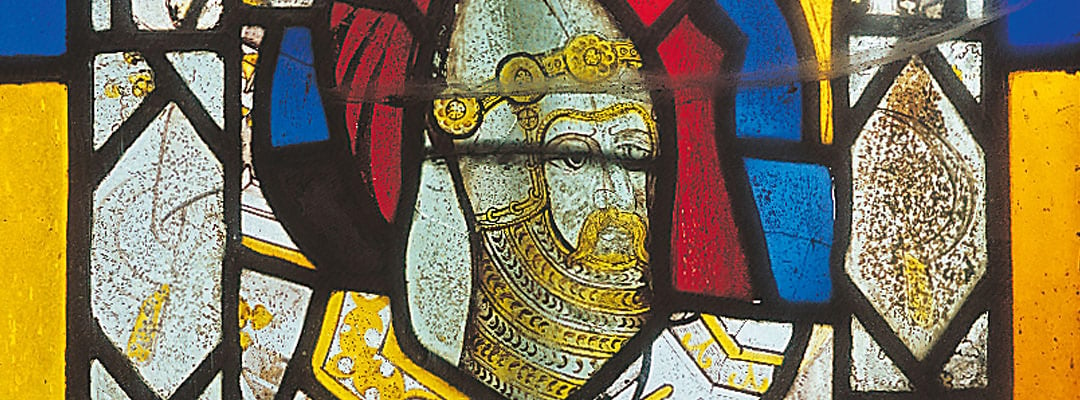Marital Strife and Anthropoid Coffins at Farleigh Hungerford
How one castle’s remarkable concentration of horrors offers insights into crime and punishment in the Tudor period, bizarre Stuart embalming practices, and macabre – and disgusting – thrill-seeking in the 19th century.

ROMANTIC RUIN?
The gentle hills of Somerset are an unlikely setting for the catalogue of gruesome events that have occurred within Farleigh Hungerford Castle’s walls. Now a romantic ruined castle, it was built about 1380 by Sir Thomas Hungerford, speaker of the House of Commons and steward to John of Gaunt. Hungerford’s turreted fortress was a paragon of chivalric might.
Sir Thomas’s son Walter was a commander at Agincourt, and as Lord Hungerford became a guardian of the infant Henry VI.
Disaster struck the family during the Wars of the Roses, when they lost ownership of the castle through backing the Lancastrian cause. Several Hungerfords lost their lives on the scaffold too. Imagination is needed to picture the castle in its heyday: its ruined towers and slighted walls sum up the shattered fortunes of a once-great family.
TILL DEATH US DO PART
The Hungerfords regained the castle after the Battle of Bosworth. Sir Edward Hungerford attended Henry VIII at the Field of the Cloth of Gold in 1520, not long after he had taken a widow, Agnes Cotell, as his second wife. Agnes’s former husband, John, had been steward to Sir Edward, so in her second marriage she had done well.
Just how she got rid of humble husband number one emerged in a trial in 1523: with the help of two servants, she had throttled John to death, and disposed of his body in the kitchen furnace. For as long as Sir Edward lived, he protected her; but after his death in 1522 she was tried for murder with her accomplices, and all three were hanged at Tyburn.
THE LADY TOWER
Sir Edward’s successor, Walter, served Thomas Cromwell so well that he became Lord Hungerford in 1536. But to his third wife, Elizabeth (whose father had fallen out of favour at Henry VIII’s court), he was less than devoted: there is still a tower at Farleigh named the Lady Tower, where she was imprisoned for three years and abandoned, forced to rely on smuggled morsels for sustenance, and driven to drink her own urine.
Lord Hungerford’s fall was swift: accused of treachery, sorcery, and buggery for good measure, he was beheaded at the Tower together with his patron, Thomas Cromwell, in 1540.
LAPPED IN LEAD
In the crypt beneath the marvellous castle chapel are eight sinister-looking lead caskets. Known technically as anthropoid coffins, they contain the remains of Sir Edward Hungerford III (d.1648) and the family of his successor, Sir Edward Hungerford IV (the ‘Spendthrift’), who had to sell Farleigh in 1686.
Sir Edward III’s monument in the chapel itself shows him in hook-nosed splendour, fully clad in Civil War armour (he had a rather feeble record as a commander on the Parliamentarian side), but he actually lies in one of the coffins in the crypt below. These coffins contain bodies embalmed in spirit, and their body-shaped forms enabled the physical remains to be kept together after death, and preserved intact, ready for resurrection at the sounding of the Last Trumpet.
Never intended for public display, these are exceptionally unusual survivals of one of the odder displays of Stuart codes of family love, as expressed through funerary custom.
GRUESOME ATTRACTION
Farleigh was sold for salvage in 1705, and many of its turrets and walls were levelled. By the 1830s it was becoming a regular destination for the picturesque traveller, in pursuit of chivalric reverie. In 1846 the future Emperor of France, Napoleon III, was among them.
The coffins of Farleigh offered a particularly macabre dare for the most foolhardy of visitors. Holes were drilled into the lead, and samples of the corpse-infused spirit were offered to bolder thrill-seekers, for tasting.
Farleigh Hungerford has witnessed some pretty disturbing episodes, but visiting today is altogether more delightful, though tinged with the memories of far bloodier times.
By Roger Bowdler